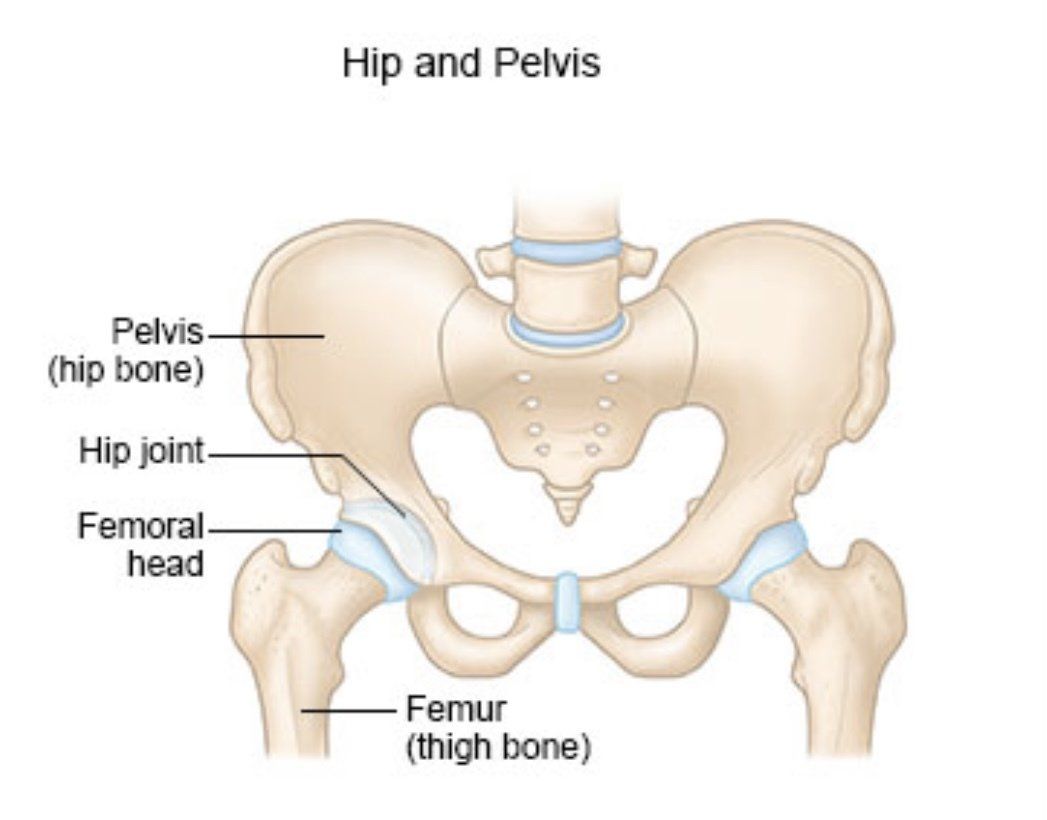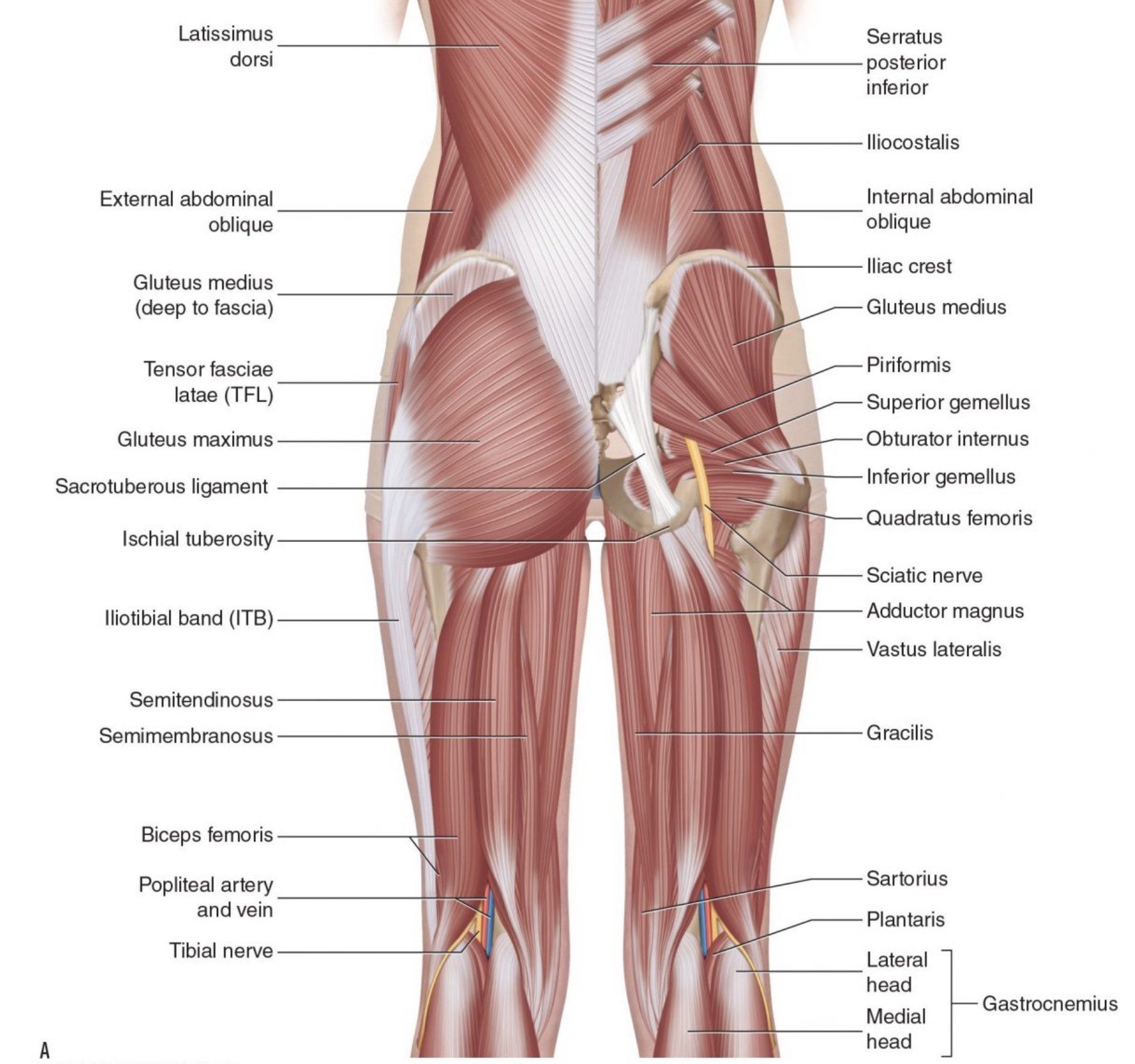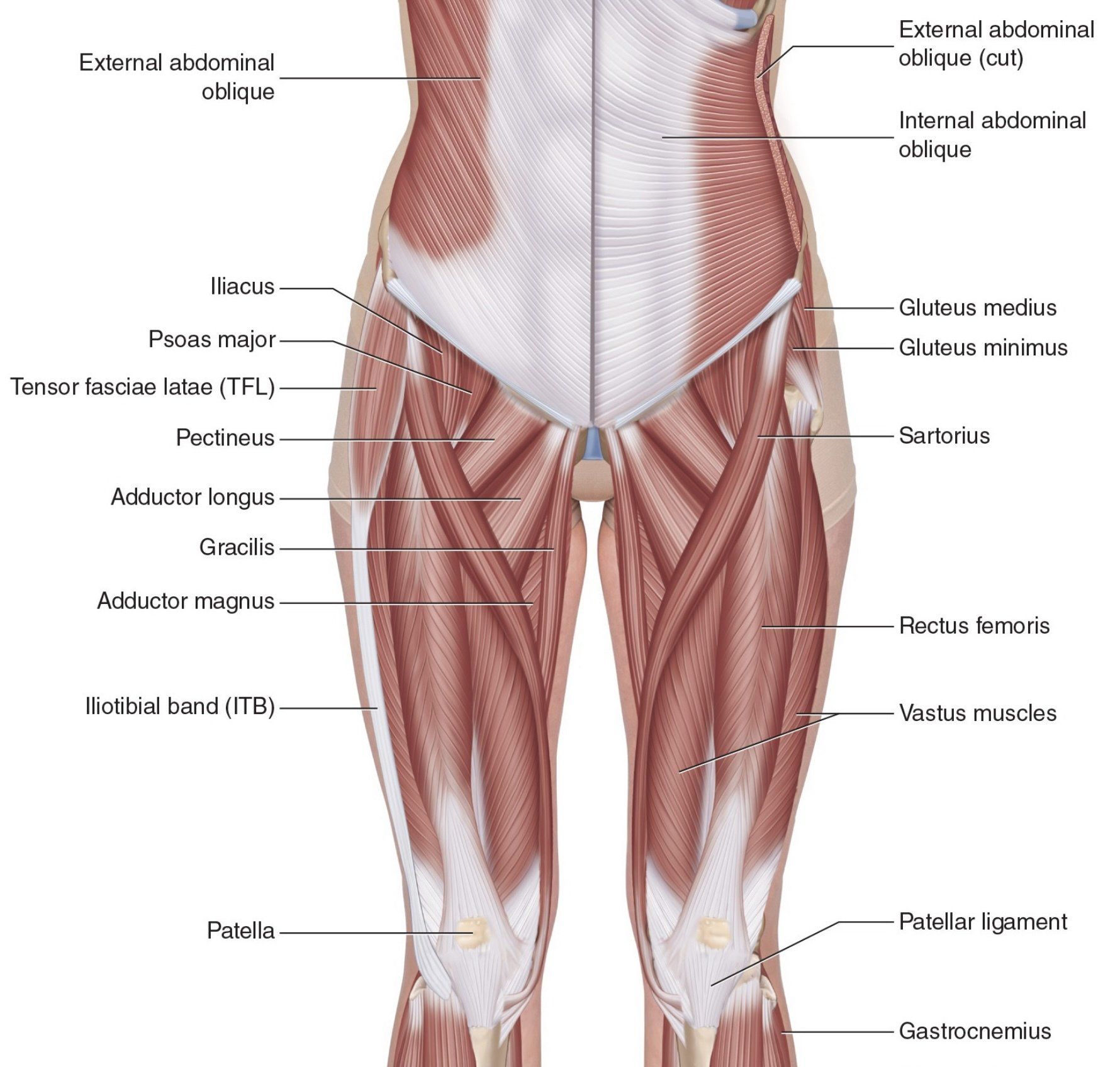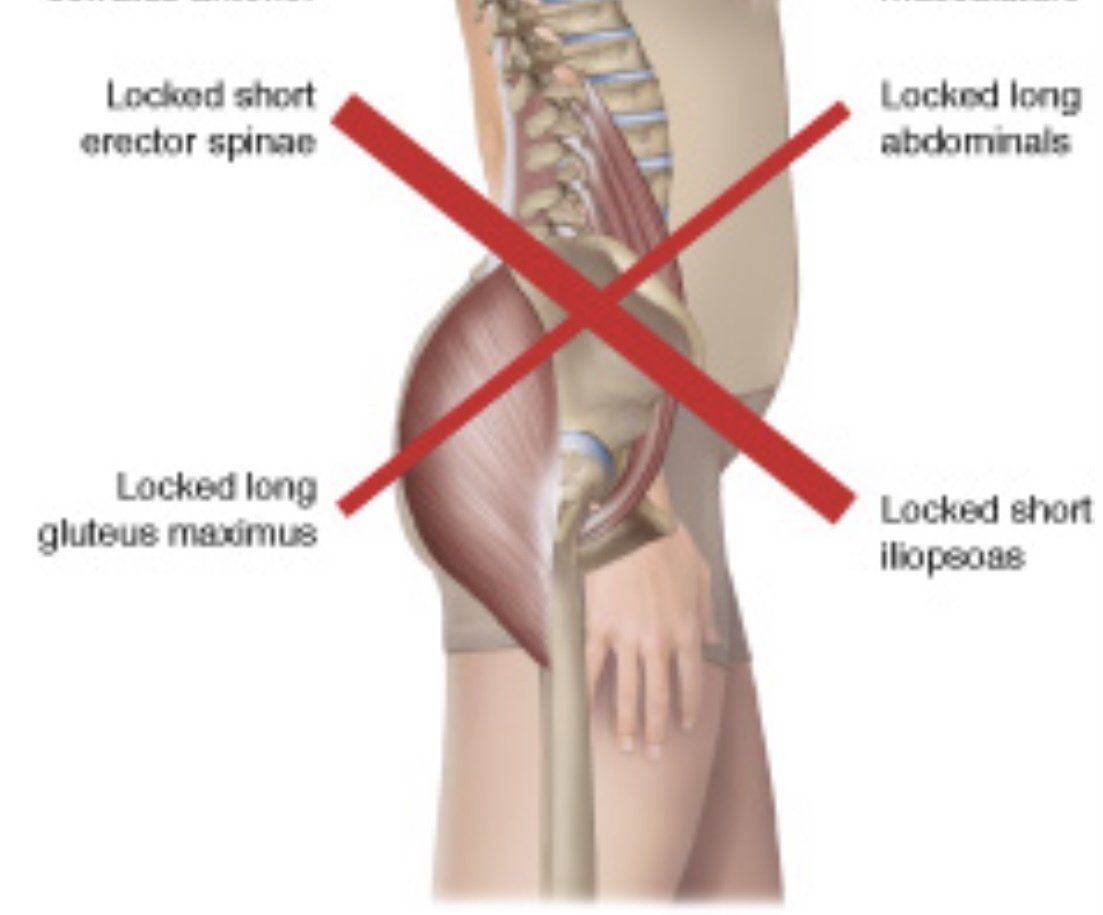Functional Health of the Pelvic Girdle
Common issues related to the pelvic girdle.
Below are some functional syndromes that may lead to chronic pain or injury. Poor posture is often caused by underlying lifestyle factors. These syndromes can help explain chronic pain and injuries incurred during activities.
Lower crossed syndrome - lower crossed syndrome is characterised by specific patterns of muscle weakness and tightness that cross between the top, bottom, front to back of the pelvic girdle. In lower crossed syndrome there is usually tightness in the hip flexor and lumbar spine muscles along with weak gluteal and deep abdominal muscles. This syndrome can normally be observed by an anterior pelvic tilt, increased curve to the lower spine (hyper-lordosis) and a bulging abdomen. This can lead to other postural changes in the body such as, kyphosis of the thoracic spine, lordosis of the cervical spine and reduced range of motion in the lower limbs.
Lordosis, Swayback and Flatback - lordosis in the lumbar spine normally describes an increased curve in the lower back with an anterior pelvic tilt. Swayback is where the hip and pelvis is tilted forward and the lumbar curves back or the torso appears to sway back from the hips. Flatback is a condition when the lower spine loses its normal curvature and appears flat. Often the knees appear bent in standing.
These conditions can be exacerbated by sitting for prolonged periods. Imbalances in the lumbar spine can lead to muscular fatigue due to lower limbs, upper torso and shoulder having to compensate for postural imbalance. The muscular imbalance can be explained through lower crossed syndrome and upper crossed syndrome.
Sacroiliac joint dysfunction - dysfunctional movement of the joints at the bottom of the spine that connect the sacrum to the pelvis. It can result in pain or restricted movement patterns in the low back and legs.
The sacroiliac joints have multiple structures involved in the support and movement of the pelvic girdle. The sacroiliac joints are surrounded by some of the most powerful muscles of the body. Strong ligamentous structures force-close the sacroiliac joint and connect the joint to the lower back and lower limbs.
Common injuries and condition related to the pelvic complex:
- Non specific chronic lower back pain - lower back pain can present anywhere between the last rib down to the gluteal fold.
- Labrum tear or impingement syndrome - functional tissue injury within or surrounding the Femoroacetabular (hip joint)
- Sciatica pain symptoms - irritation, inflammation and spasms, pinching or compression of a nerve in the lower back or buttock region that radiates down one or both legs.
- Hip tendonosis - discomfort, stiffness or tenderness in the musculotendon of the hip
- Hip fracture or dislocation rehabilitation - restoration of strength movement patterns
- Snappping hip syndrome - feeling a snapping sensation or an audible popping sound in your hip
- Connective tissue and muscle strains in the thigh, gluteal flexor muscles - pain in movement of lower limbs
In most instances relief, improvement or correction can be achieved through rehabilitation exercise and therapy. Primarily, tight and short muscles should be corrected before strengthening weak muscles. However, improving muscle tonicity may help tissue elasticity.
In a sporting context poor functional movement patterns (dyskinesia) can lead to overuse injuries. The sports massage therapist will test, assess and treat most musculoskeletal conditions related to the shoulder complex. This will include spinal, upper and lower limb conditioning that can influence the functional motion of the pelvic girdle.
The sports massage studio offers treatment plans for athletes, exercise enthusiasts and occupational conditions




